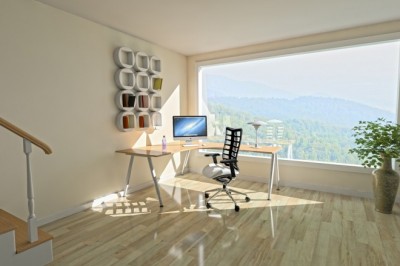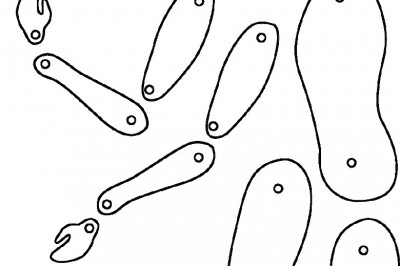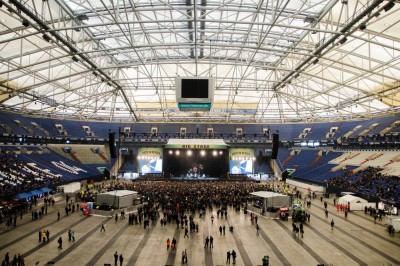
Work Design Principles
The two primary objectives of the ergonomics process are to enhance performance and reduce fatigue. The ergonomics process is a multi-step method to evaluate work, study how the body responds to these work demands and then use this information to design or improve work areas to best meet these two objectives. The design of a work area or equipment can have significant effects on worker fatigue, safety and worker performance. In addition, with the expansion of machine technology, new and different equipment is continually introduced to the work place each year. This expansion of technology in the workplace can both ameliorate workspace problems, as well as, create them. For a work area to flow efficiently and productively, both the equipment and the people must be operating smoothly. Any obstacle, difficult reach, congestion or confusion can impair work output and may, at times, compromise worker safety.
In work design or modification, we need to answer the questions-
• " Does the person fit (body size) in a work place?"
• "If one worker fits in a workplace, do all workers fit in a workplace."
• "If all workers fit in a work place, are some individuals more likely to experience fatigue, injury or diminished work performance due to poor fit into a workplace?"
• " Does the design of the equipment have any adverse effects on the worker's safety and productivity?"
It is essential to be aware of the potential effects, both positive and adverse, that work design issues can have on both worker performance and fatigue. When designing or modifying equipment or a work area, the following factors need to be considered:
1. Safe clearances or heights, such as for doorways or walkways.
2. Safe reach distances, such as for safety cords or equipment controls.
3. Code requirements, such as for reaches or work heights.
4. Safety features including machine guards and protective shields.
5. Equipment control configuration or devices.
6. Work station or work flow designs
7. Handicap access adaptations with compliance with ADA laws.
Work areas and equipment are designed and built based on human capabilities and capacities. Obviously, there are some limitations to work design, as the worker population, most like is quite variable in size, shape and weight. In addition, there is no such thing as the "average "person. That is why the principles of anthropometrics have become so important.
Anthropometrics Defined
Anthropometrics is the science of the physical dimensions, size, shape and weight of the human body. The word anthropometry comes from the Greek words "anthro", meaning "man" and "metrein" meaning "to measure". The study of anthropmetrics is based on the concept that the population morphology is variable and that there are individual size and strength capabilities and differences. By measuring human body dimensions, one can establish normative data, which describes the frequency distribution of the population's size. Anthropometric principles can then be applied to work place design and modification to enhance worker performance, reduce fatigue, and determine safe working conditions.
The basis for anthropometry is the careful measurement of human body dimensions of a set population. The dimensions that are measured include:
1. Height
2. Weight
3. Reach, both horizontal and overhead
4. Stoop
5. Grip strength
6. Circumferential measurements
7. Limb length
In addition, gender, age, race and nationality are variables that should be considered when evaluating standard anthropometric tables or creating specific population tables. Anthropometric data is compiled to make guidelines to make the work areas, equipment, tools and product fit the size, reach, grip, clearance and capacity of the working population. Worker populations contain individuals who are male and female, large and small, short and tall, young and old, and strong and weak. The goal of applying the principles of anthropometrics to the workplace, as part of work area and system design is to enhance human performance, control fatigue and prevent accidents.
Anthropometric Tables
In the science of anthropometrics, measurements of the population's dimensions are obtained based on the population's size and strength capabilities and differences. From these measurements, a set of data is collected that reflects the studied population in terms of size and form. This population can then be described in terms of a frequency distribution including terms of the mean, the median, standard deviation and percentiles. The frequency distribution for each measurement of the population dimension is expressed in percentiles. The xth percentile indicates that x percent of the population has the same value or less than that value for a given measurement. The median or average value for a particular dimension is the 50th percentile. In addition, 100-x of the population has a value higher than x.
In ergonomic design, we do not design for the average person, or the 50th percentile, we design for the 95th percentile. In other words, 95% of the population can use the work area safely and efficiently, and 5% of the population may need to be accommodated. Conventionally, the 95th percentile has been chosen to determine clearance heights or lengths. That means 95% of the population will be able to pass through a door, while only 5 % of the population may need to be accommodated. In addition, the 5th percentile female has been chosen to determine the functional reach distance, that means 95 % of the population will be able to perform this reach, and only 5 % of the population may need to be accommodated.
Summary
Standard Anthropometric tables can be used, or an Anthropometric table can be created of a specific worker population. These data tables can be used to help determine safe and efficient work area and workflow designs. Anthropometric tables provide useful information on population size, shape and strength capabilities and differences so that work areas can be built or modified to improve work design and increase efficiency.






























